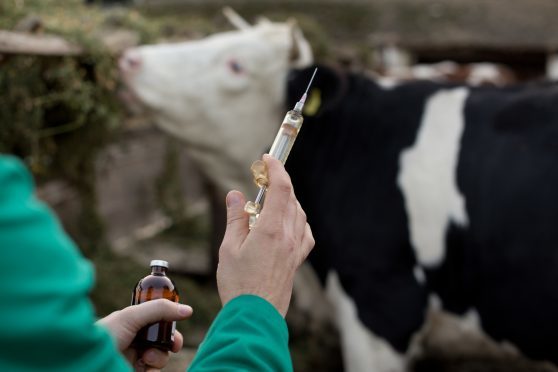New sector-specific actions and targets aimed at reducing antibiotic use in farm animals will be issued by the Scottish Government in the next few weeks.
Chief Veterinary Officer (CVO) Sheila Voas said the government had worked with industry and the Responsible Use of Medicines in Animals (RUMA) group to devise the new advice.
Her statement followed warnings by England’s chief medical officer, Professor Dame Sally Davies, of the “apocalypse” facing the globe should antibiotics lose their effectiveness.
Ms Voas said there were many actions farmers and vets could consider to reduce the use of antibiotics in livestock.
She added: “I would also urge all farmers and crofters to think carefully about what they need and to discuss this with their vets, including dry cow therapy or watery mouth preventative treatment.
“Good hygiene, vaccines, good nutrition and husbandry can also play a huge role in reducing the need for antibiotic use.”
Other leading vets and microbiologists added their voices to the call for a joined-up approach to reducing the industry’s use of antibiotics.
British Veterinary Association president John Fishwick called on farmers to look again at housing, ventilation, stocking density and welfare if they found they were regularly using a lot of the drugs.
“Farmers who use them a lot because they are convenient or because they really need to should work with their vets to find out why that’s the case,” he said.
“We have to respect farmers but they must be aware that we’re moving towards an environment where less antibiotics can be used.”
Meanwhile a leading microbiologist at Kingston University said new diagnostic tests were required to help vets target treatments and help reduce unnecessary use of the antibiotics.
Professor Mark Fielder is currently working with a postgraduate student on a three-year project to develop a rapid diagnostic test for salmonella in calves.
“Diarrhoea in calves can be caused by a number of things, such as a parasite, a virus, or bacteria,” he said.
“Only a bacterial cause would potentially require antibiotic treatment and the test we’re developing should give a result within an hour – and crucially could be done in the back of a car or van out on the farm rather than having to go back to the lab.
Prof Fielder said the aim was to get away from using broad-spectrum antibiotics based on a ‘best guess’ diagnosis, which could lead to an increased risk of resistance developing.
He added: “These tests would allow vets to know exactly what they are dealing with and, when required, pick the antibiotic that is most likely to have a positive effect.”
nnicolson@thecourier.co.uk







